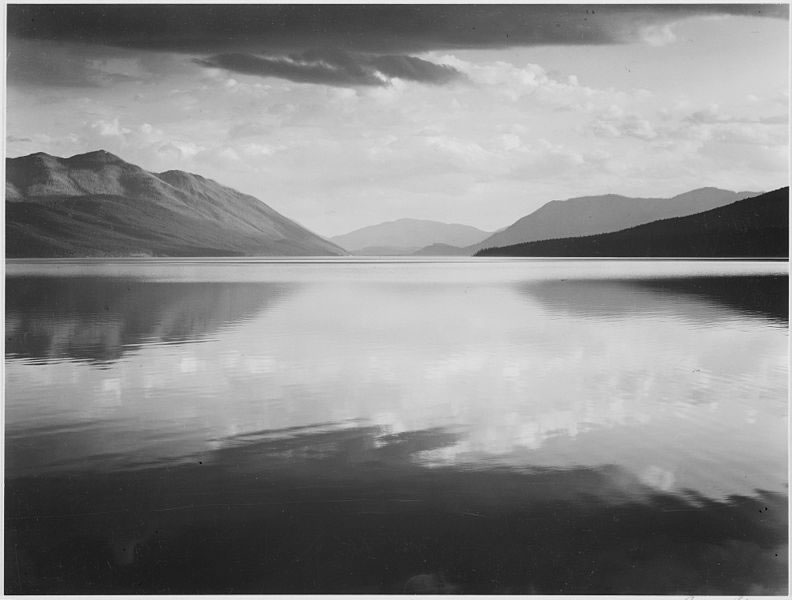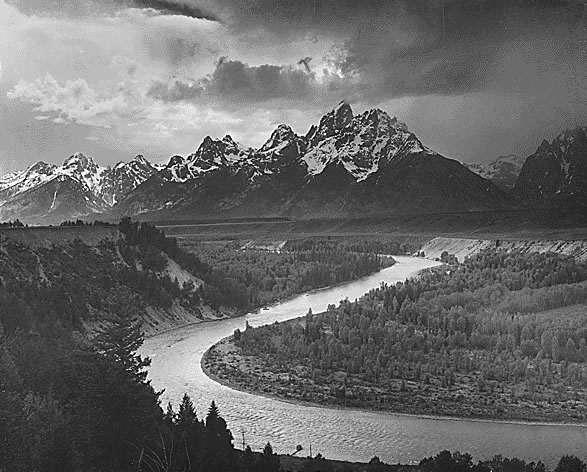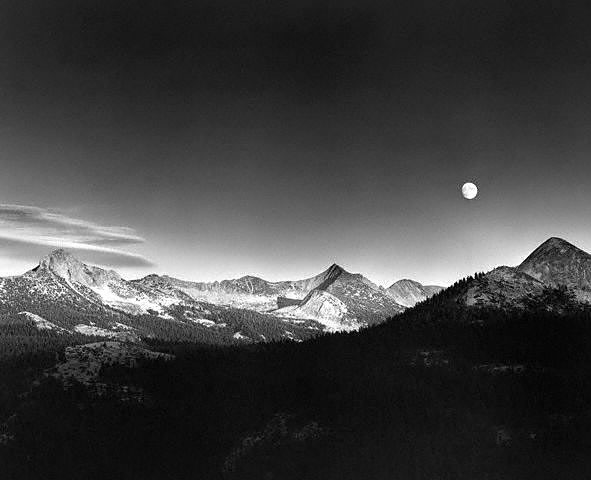| Artists Biographies |
| Ansel Adams |
| Matthey Brady |
| Winslow Homer |
| Georgia O' Keefe |
| Pablo Picasso |
| John James Audubon |
| Mary Cassat |
| Vincent Van Gogh |
| Leonardo da Vinci |
| Andy Warhol |
| Maya Lin |
|
Glacier National Park Early LifeAnsel Adams was a famous American photographer and environmentalist. He was born near the Golden Gate Bridge in San Francisco, California, on February 20, 1902. When he was four years old, his nose was broken when he was knocked to the ground by an aftershock of the great earthquake. His nose was crooked for the rest of his life. One of his earliest memories was seeing smoke from the great fire that followed the earthquake. Growing UpAnsel was an only child who performed poorly at school, so his parents had him tutored at home. Although he was hyperactive and possibly dyslexic, he was thought to possess an eidetic memory, which is a form of photographic memory that includes memories of smells, sounds, and other senses. Ansel enjoyed music and taught himself to play the piano when he was twelve. He also enjoyed nature and loved walking in the sand dunes near his home. His father gave him a telescope, and they shared a great interest in astronomy. A Photographer is Born in Yosemite National ParkWhen he was fourteen, Ansel read In the Heart of the Sierras by James Mason Hutchings, and he convinced his parents to take a vacation to Yosemite National Park. His parents gave him a Kodak Brownie camera for the trip, and Ansel’s interest in photography was born as he tramped through the park’s mountains. When he talked about the trip, Ansel said, “The splendor of Yosemite burst upon us and it was glorious… One wonder after another descended upon us… There was light everywhere… A new era began for me.” Some of his most famous photographs were of Yosemite. His work helped raise awareness of and interest in America’s national parks. In 1927, Ansel took one of his best-known photos, “Monolith, the Face of Half Dome” at Yosemite.
Grand Teton Mountains and Snake River The Sierra ClubWhen he was seventeen, Ansel joined the Sierra Club. The club works to preserve the earth’s natural wonders and resources. He spent four summers as the caretaker of the Sierra Club visitor center in Yosemite Valley and was an active member of the club for the rest of his life. Ansel was interested in environmental issues related to national parks, especially Yosemite, and the preservation of wilderness.Photography as an ArtAnsel learned basic darkroom techniques working part-time for a photo finisher in San Francisco. In 1927, Albert Bender, a businessman and patron of the arts, helped publish Ansel’s first portfolio, Parmelian Prints of the High Sierras. Ansel soon got paid for photos, and he began to think about a career as a photographer instead of a pianist. In 1933, he opened his own art and photography gallery in San Francisco. He often worked for eighteen or more hours a day, for days and weeks on end. He learned from and exhibited with other famous photographers of the time including Alfred Stieglitz, Imogen Cunningham, Paul Strand, and Edward Weston. They developed photography as a form of art. Ansel helped to establish the first department of photography at a museum at the Museum of Modern Art in New York.
Sierra Nevada Mountains Ansel's Work in Space
Video
|


